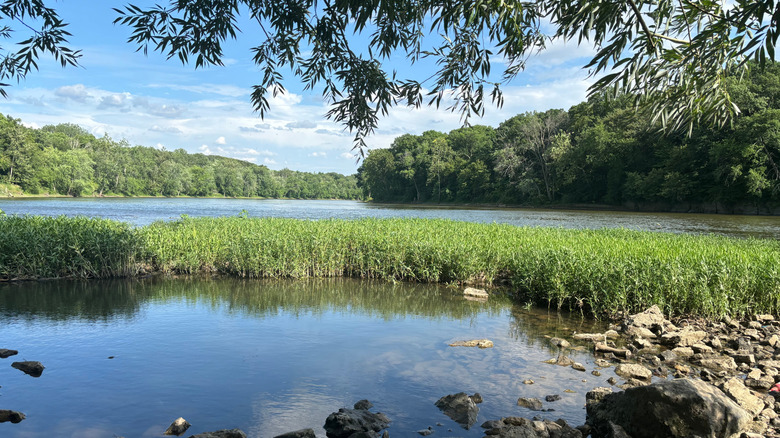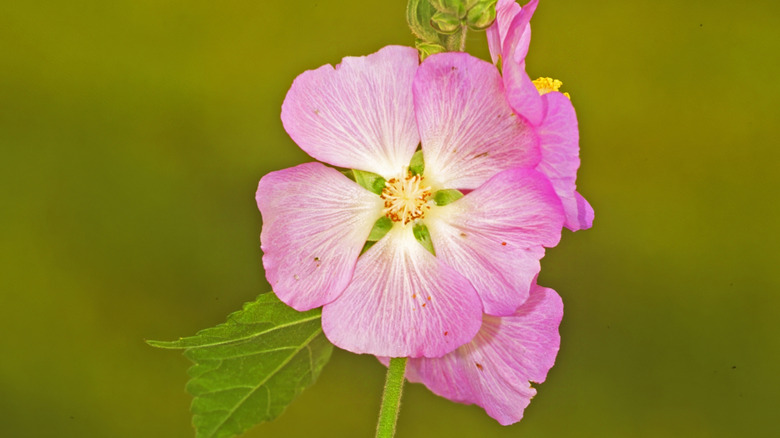The Beautiful Illinois Flower Saved From The Brink Of Extinction
Hidden in the heart of Illinois is a stunning, lesser-known flower that was recently saved from the very brink of extinction. With delicate, bluish-pink, hollyhock-like petals that become white closer to the center, the Kankakee mallow (Iliamna remota) is one of the rarest native American plants. It's naturally present only on Langham Island in the Kankakee River. First discovered by botanist E.J. Hill on June 29, 1872, Kankakee mallow is also officially recognized as an Illinois state endangered species.
In recent decades, this delicate plant had a brush with extinction. Its limited habitat of Kankakee mallow was overtaken by dense thickets of invasive honeysuckle, which crowded out these native plants. When a group of botanists visited the island in 2014, they found it so overrun with invasive honeysuckle that they could barely step out of their canoes. Worse, all traces of the once-abundant Kankakee mallow seemed to be gone. At that point, it hadn't been seen in the wild since 2002.
Fortunately, some seeds remained in the ground, and volunteers and conservation partners were able to give the Kankakee mallow another chance to live and thrive in the wild. They removed dense brush and used carefully planned burns to reclaim the space. The conservation efforts paid off: Nearly three-quarters of the island has been cleared, and the Kankakee mallow population is recovering, though more work is needed.
Why the Kankakee mallow came so close to extinction
While many flowers grow perfectly well in shade, Kankakee mallow is not one of them. So, when the fast-growing invasive honeysuckle appeared on Langham Island, it outcompeted these native plants. It denied light to the mallows, reduced their growth, and ultimately caused the death of many plants. Luckily, the Kankakee mallow seeds proved to be more resilient than their parent plants. Their tough coats allow them to stay viable and resist germination for many years until heat breaks their dormancy. Thanks to this quality, the seeds remained dormant while the island's honeysuckle population kept the environment inhospitable for them.
Guided by this knowledge, restoration workers cleared away the invasive brushes and set planned and controlled fires throughout the area. The fires not only allowed sunlight to once again reach areas where the mallow seeds were buried, but they also promoted the seeds' germination. Restoration workers are now discovering Kankakee mallow in many new places on the island, which is a good sign. Furthermore, the conservation efforts have resulted in nearly 1,000 new plants sprouting on the island. However, environmentalists warn that the recovery is still fragile, as reemerging honeysuckle shrubs continue to threaten the native mallow's survival. Nevertheless, the story of Kankakee mallow's comeback is nothing short of miraculous. It rivals the awe inspired by Camellia japonica 'Middlemist's Red' — one of the rarest flowers in the world.

